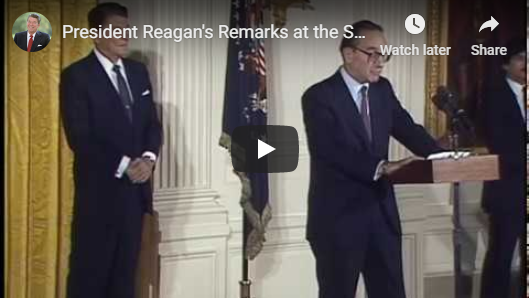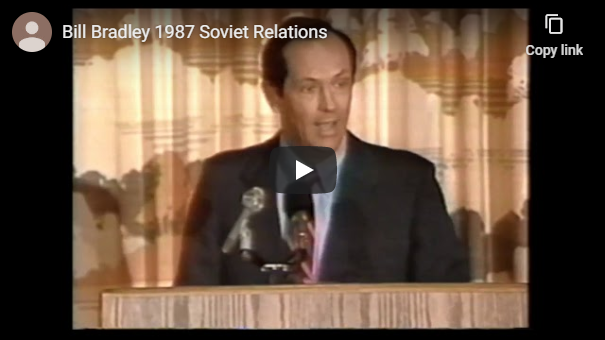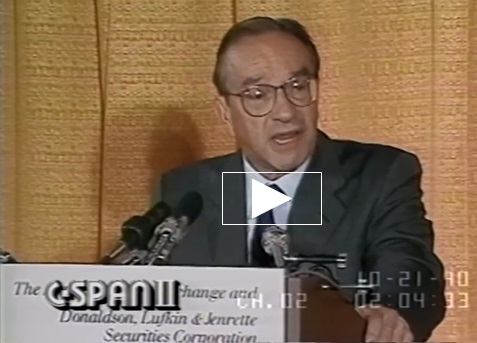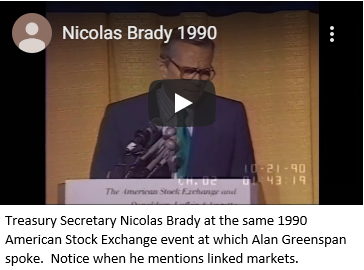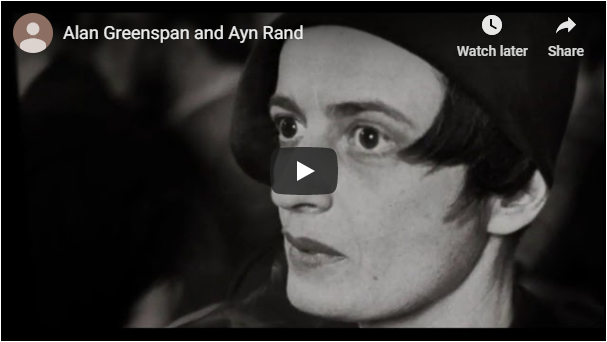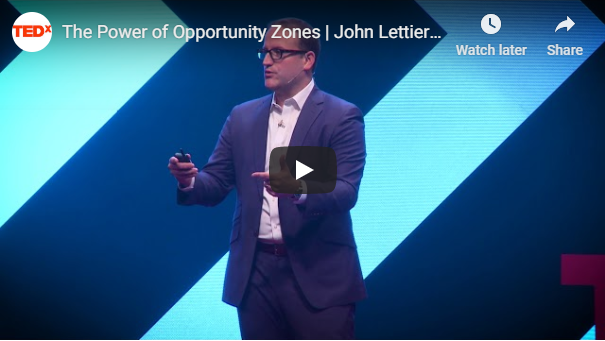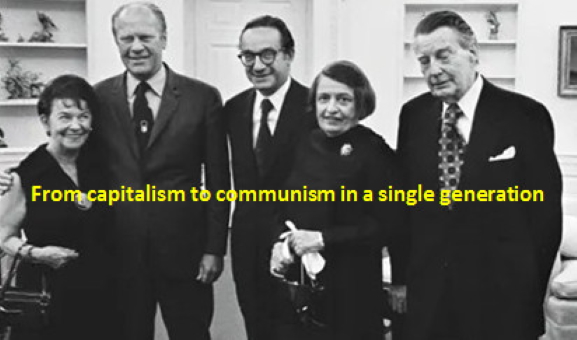
Surrender of the Economy and Its Consequences
By: Vicky Davis
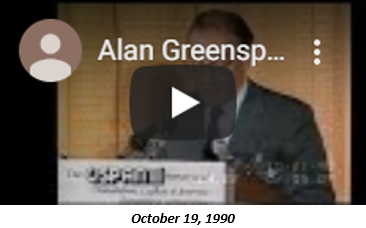 What would you think if you suddenly discovered that everything happening in our country today was the result of a social science experiment? Think about that. Our country is a laboratory. To aid in thinking about this, think of a Las Vegas casino where they use loaded dice, marked cards and rigged slots. As in the movie “The Sting”, the setting is staged and the gamers all have parts to play. You are the mark – the only person in the room who doesn’t know that it’s a con game.
What would you think if you suddenly discovered that everything happening in our country today was the result of a social science experiment? Think about that. Our country is a laboratory. To aid in thinking about this, think of a Las Vegas casino where they use loaded dice, marked cards and rigged slots. As in the movie “The Sting”, the setting is staged and the gamers all have parts to play. You are the mark – the only person in the room who doesn’t know that it’s a con game.
The magnitude of the idea is almost too big to comprehend. Who would have power enough to run the game? How about the Federal Reserve? Recently, in my quest to try and figure out what went wrong in our country, I came upon a program put on by the American Stock Exchange in which Alan Greenspan was an invited speaker. Greenspan’s topic was about the differences between the economic organization of the west versus the east including an overview of what would need to be done to transition from the Soviet centrally planned economy to a market system. This is without doubt, the most important speech I’ve heard Greenspan give concerning his thinking.
Before we get to Greenspan’s thinking, it’s important to recall the timeline. Ronald Reagan appointed Alan Greenspan to be the Chairman of the Federal Reserve in August of 1987. The list of positions Greenspan held clearly identify him as an anointed one. But anointed by whom?
Rise of the Libertines
Previous Research
Libertarians and the Rise of Technocratic Fascism
Reason is the Reason for Treason
Logical Islands
On October 10, 1987, Senator Bill Bradley gave a stunning statement (for one who grew up in the Cold War era) at the East-West Institute concerning U.S.-Soviet Relations. The punchline of Bradley’s remarks was that they wanted to open up western capital markets to the Soviets. As you listen to this, keep in mind that the American stock market was supposed to serve as the capital allocation mechanism for the American economy. It was the money of American businesses, American investors and the American people.
Black Monday
On October 19, 1987, in a day and a half, the stock market lost over a trillion dollars of valuation when Market Specialists – the Goldman Sachs, the Lehman Brothers, the Morgan Stanleys, etc. refused to step in to make the market. There were sellers – but no buyers. After a day and a half of staggering losses, the Federal Reserve stepped in to back the market – opening up the U.S. Treasury to Wall Street. It seems safe to say with the benefit of hindsight, that the market failure was engineered for the purpose of creating the ‘need’ for the Federal Reserve to step into the to regulate it.
Question: Was this John Galt’s strike?
Previous Research: Crimes Against Reality
The event at which Greenspan spoke was an annual conference of the American Stock Exchange. It was held on October 16, 1990.
The insight into Greenspan came when he said that when he was learning economics, the prevailing opinion was that central planning an economy was a superior method and free market economics was virtually unknown. At some point, he evolved into the recognition of free market economics.
The second comment in Greenspan’s remarks after the idea of a grand experiment between economic systems, Greenspan referenced a speech given by Winston Churchill in Fulton Missouri in 1946. The title of the speech was Sinews of Peace but it became known as the Iron Curtain Speech. It’s this speech where Greenspan got the idea of the Iron Curtain as the dividing line that established the east-west laboratories for the social science experiment – or contest as I would call it.
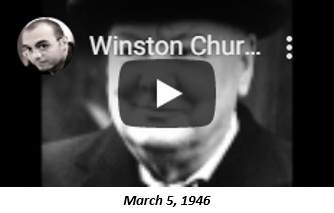 Churchill set up the framework for east-west relations in his speech. He used the words of American military men saying that what he was delivering was the “over-all strategic concept” and that the objective was nothing less than the safety and welfare, the freedom and progress of all the homes and families of all the men and women in all the lands. In other words, it was a game for all the marbles.
Churchill set up the framework for east-west relations in his speech. He used the words of American military men saying that what he was delivering was the “over-all strategic concept” and that the objective was nothing less than the safety and welfare, the freedom and progress of all the homes and families of all the men and women in all the lands. In other words, it was a game for all the marbles.
He gave a list of capitol cities that would be in Moscow’s sphere of influence. Interestingly, he said that only Athens, Greece “with its immortal glories-is free to decide its future at an election under British, American and French observation”.
Churchill also mentioned several times what good friends the Empire was with the Soviet Russians.
We British have our twenty years Treaty of Collaboration and Mutual Assistance with Soviet Russia. I agree with Mr. Bevin, the Foreign Secretary of Great Britain, that it might well be a fifty years Treaty so far as we are concerned. We aim at nothing but mutual assistance and collaboration.
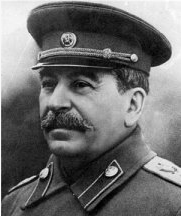 In an article in the German Life magazine titled, America’s Long Road to the Federal Republic of German Life, Robert A. Selig wrote the following about Josef Stalin (emphasis added):
In an article in the German Life magazine titled, America’s Long Road to the Federal Republic of German Life, Robert A. Selig wrote the following about Josef Stalin (emphasis added):
“The Soviet Union derived its raison d’être from the ideology of Marxism-Leninism; Stalin’s world was a bipolar one of antagonistic and mutually exclusive ideologies and their ancillary political and economic systems. The antagonism would eventually be overcome through world-revolutionary violence, which made Stalin’s regime expansionist by definition. Even before the war with Nazi Germany was over, Stalin had already accepted the possibility of a future conflict of ideologies with the west. In April 1945 he told Yugoslav communist Milovan Djilas:
“This is not a war as in the past: Whoever occupies a territory will also determine its societal system. Everyone introduces his own system as far as his own army can advance. It can’t be any other way.”
Churchill did say at the beginning of the speech that he was not there in his official capacity but that begs the question, was that slight of mouth? He kept referring to the British Empire and the British Commonwealth which is different than the government of Great Britain and the purpose – his “overall strategic objective” was to extend an invitation and get the United States to join the Commonwealth. He noted in particular, Canada’s membership in the Commonwealth and the Permanent Defense Agreement the U.S. had with Canada:

The United States has already a Permanent Defence Agreement with the Do-minion of Canada, which is so devotedly attached to the British Commonwealth and Empire. This Agreement is more effective than many of those which have often been made under formal alliances. This principle should be extended to all British Commonwealths with full reciprocity. Thus, whatever happens, and thus only, shall we be secure ourselves and able to work together for the high and simple causes that are dear to us and bode no ill to any. Eventually there may come-I feel eventually there will come-the principle of common citizenship, but that we may be content to leave to destiny, whose outstretched arm many of us can already clearly see.
Getting back to Greenspan and his comparative analysis between the western economic systems and the centrally planned economic systems of the Soviet Union and countries in their sphere of influence, the following is a summation of Greenspan’s observations about the centrally planned economies of the east:
Greenspan’s Observations about the Soviet Economy
Soviet economy was centrally planned with government ownership of enterprises. They had no accounting systems, there were no supply/demand signals for value and price. Centrally planned economies work well for military applications in which the number of planes or other equipment are known. Given a bill of materials on each asset type, production can be planned and scheduled. He called the system needed to for this application, an Input/Output system. Essentially, you know you want to produce 29 planes of a particular type, you know the materials you need for each plane by the bill of materials, and you can extrapolate from there for both the parts requirements and the time required for production to meet target number of planes to be produced.
What the Soviet economy did not do well, was to meet the needs of the consumer market because although central planners could fabricate a list of items they felt were <em><strong>required</strong></em> for all classes of consumers, they couldn’t do it well and they couldn’t anticipate preferences. Prices were fixed by the government so there were no supply/demand signals here either.
The central planners made all decisions. There were no accounting systems as we have them in the west that provide signals for efficiency and no requirement for efficiency because there was no competition. The concept of depreciation which is a tax consideration as well as a production/competition function did not exist so equipment was not replaced until it fell apart from age and wear which is why the Soviet economy was stalled in a 1940s model of production.
Money – Greenspan noted that in 1917, there were some people – presumably Vladimir Lenin being one of them, thought that money could be eliminated with a centrally planned economy. Theoretically it could be depending on how you define money and if you have the technological capability to implement it. Money as ration coupons along with an identity card for status was considered. The impression from Greenspan was that this system was implemented to some degree in the Soviet economy. There was only one bank and that bank served the dual purpose of a central bank and a commercial bank. It sounded as if the function of the bank was more as an accounting device to keep track expenditures and surpluses of printed money. The bank had no capital allocation function (i.e. lending) for growth of the economy. The money just sat there in the accounts on the books apparently.
A similar summation on western economies is not being given because as Greenspan pointed out, we all understand basically how our economic system works – at least we did at the point when Greenspan spoke at this event. What we didn’t know was that Greenspan was conjuring a way to logically merge the eastern and western economic systems using a redefinition of the word “market” as we in the west have traditionally used it.

Treasury Secretary Nicolas Brady at the same 1990 American Stock Exchange event at which Alan Greenspan spoke. Notice when he mentions linked markets.
Norman Dodd, Director of Research for the House Special Committee (1953) to investigate tax-exempt Foundations (Un-American Activities).
In the new paradigm, the word “market” didn’t just mean the pool of buyers, sellers, producers and consumers (supply and demand) of a particular product in the United States, the words “free market economics” meant common market economics which is an entirely different thing because a common market separates the economic system from the political system in a country. It’s a major step toward the disintegration of a nation-state because the nation-state relinquishes sovereignty over their economic fate.
Ayn Rand
Alan Greenspan was an acolyte of Ayn Rand. Libertarians are a cult that formed around the ideas of Ayn Rand. The essence of libertarianism is that government is bad and should be eliminated. They readily accepted the idea of “free market economics”. It’s not clear how many of them are educated true believers and how many of them just bought the slogans without an understanding of what was being said.
At the point in history when U.S. leaders were making this disastrous decision for “free market economics“, it was at the time when the decision was also made to redefine our transportation system (internationalize it), to build out and give open access to the nation’s telecommunications system. That means the Internet.
In 1991, Senator Al Gore ushered through the Congress, the High Performance Computing and Communications Act. The following are the significant elements of that legislation extracted from previous research. Notice the emphasis is on movement of data and not the aggregation of data.
▪ Vision for a National Information Infrastructure which Gore called the “information superhighway”. The concept of the NII changed almost immediately to the ‘Global Information Infrastructure’ (GII) after passage of this legislation.
▪ Funding for the build out of the communications lines (Internet) as we know it today.
▪ Money for Research & Development
▪ Open Use – educational, public and commercial use
Surrender
In effect, common market economics which they deceptively called free market economics was the surrender of our economy to outside forces. The “shared” economic system meant not only money and business leaving the country, it meant foreign money, foreign businesses and foreign workers coming in. For foreign investors to come in, they needed information about the economic pool of the United States (that’s how Bloomberg made his money apparently and now he’s trying to buy the political system as well). This turned information into a commodity in the United States and we all know the impact that has had – loss of privacy, loss of businesses as they became targets, the list goes on.
How Communism is Born
The effect of surrendering our economy was to lose control over the economic systems of the country. It meant no longer being able to apply the moral force of our culture and heritage to the economic war machines unleashed on the country. As you are sneering at the thought of the combination of morality and economics, think about the price of drugs, think about your prime property that some corporation wants and can put to more beneficial use (see Kelo v New London), think about the importation of foreign workers to take your job.
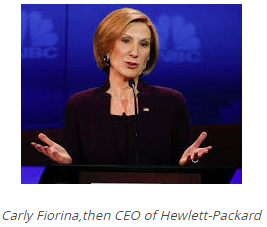 “There is no job that is America’s God-given right anymore. We have to compete for jobs.“
“There is no job that is America’s God-given right anymore. We have to compete for jobs.“
Buying jobs: See Foxconn and Foxconn Revised and more Foxconn and one more
The second order effect of surrendering the economy, is that the government must then implement centrally planned social systems to mitigate the loss of real economic activity in a capitalist system as we knew it. Those centrally planned social systems evolve into a communist system of control. It is inevitable because as poverty sweeps the land, anger grows and in order to retain political power, the politicians must mitigate for the human costs. That’s how we ended up with Trump as President.
In about 2007 when it became clear that the American economy was being bled out, Alan Greenspan was called to Congress to testify about what was happening to our economy and to find out what the Federal Reserve intended to do about it. Listen carefully for the contradictions in what Greenspan said.
![]()
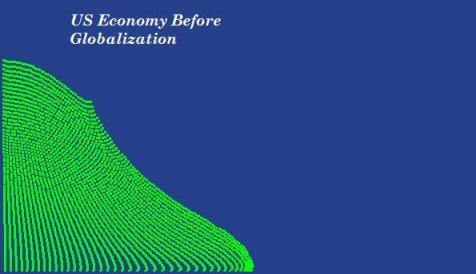
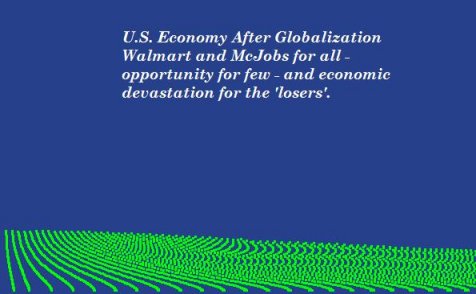
Government job creation is being done through the use of specified zones where government (state, federal and local) money, incentives and a lot of foreign money is targeted at a designated location. In the Trump Administration, he’s calling them Opportunity Zones. During other administrations, they were called Empowerment Zones, Workforce Development Zones, Hubzones, Urban Renewal Zones, Intermodal Commerce Zones, etc.
The only real opportunity in Opportunity Zones is for the investors. The pattern is that a big hoopla is made about investors coming into an area. This requires taxpayer investment for the infrastructure to support the alleged new businesses which is bonded debt creation for the public. What they usually build are warehouses – just square, block buildings – very cheap relatively speaking. The only real jobs are the construction jobs. The alleged new businesses only stay in business until the tax incentives run out. If they continue to stay in business, they normally bring in foreign labor and let their American workforce go or they convert to a research and development facility which means that the government will continue the subsidies out of a different account – but it’s still government money which generates debt and produces nothing really.
What it all boils down to is that the real economic activity is the production of bonded debt.
Here is a video produced by KPMG on the tax incentives for investors in Opportunity Zones. Keep this in mind about KPMG – they are the masters of producing shell companies for tax shelters. That is consistent with the pattern of business creation and then going out of business when the tax incentives are over – but the bonded debt for infrastructure remains.
A map of the Opportunity Zones in Idaho was found on the Idaho State Commerce Department. Notice that the opportunity zones follow the Interstate – where it is currently and where it will be going up to Canada. What that says is that the Opportunity Zones are intermodal commerce zones on the international corridor. There is a pattern of development involving putting in high tech surveillance and control systems for the international transportation system.
Explaining this gets so fricking tiresome. My programmer friends and I used to laugh at how we were all going to end up selling McDonald’s hamburgers to each other. We were only partially correct about that. Most of the working people in this country will have jobs surveilling each other in the open air panopticon that is being built with the centers of surveillance at the transportation hubs.
In the next two videos, they are talking about Erie Pennsylvania. The first video is about the consequences of surrendering our economy to the “common market”. The second video is cheerleading the rebuilding using the Opportunity Zone tax incentives which is centrally planned economic activity for a purpose that is fleeting – construction and bonded debt creation and the surveillance state.
Published with Permission of thetechnocratictyranny.com
